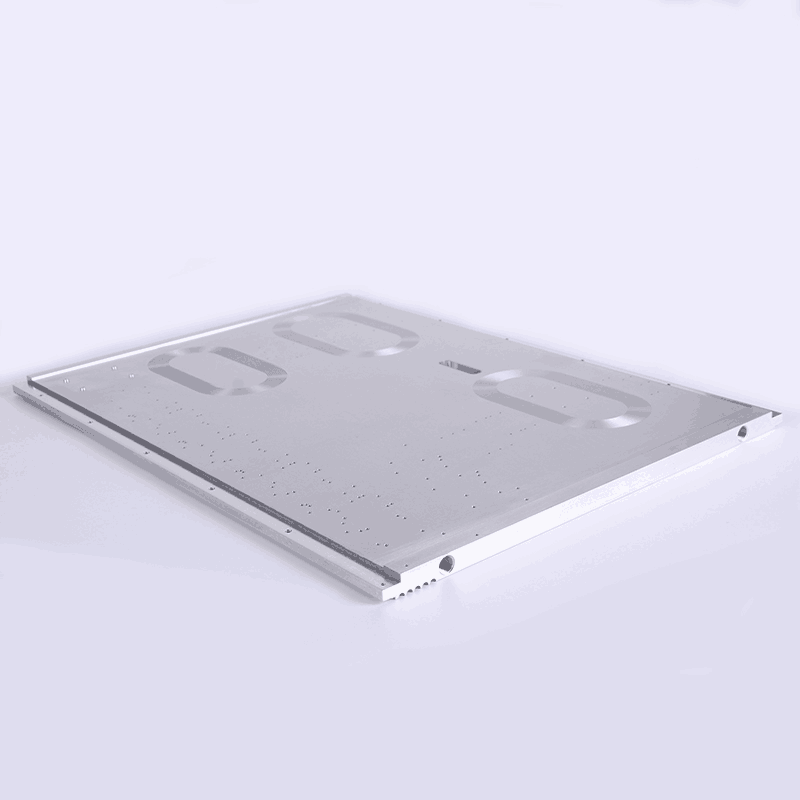Vacuum brazing is a manufacturing process used to connect components for higher thermal performance and lighter solutions. Vacuum brazed cold plate refers to a water-cooled plate that is made by machining two metal plates (usually folded fins or scraped fins) with an internal channel and fin structure, and then carefully sealed in a vacuum chamber for heating. The filling metal with a lower melting point is melted into the joint of the cold plate through capillary action under the corresponding process conditions, and the two plates with an internal channel and fin structure are connected to form an internal flow channel. The vacuum system can be attached to the workpiece so that the pressure inside the workpiece is lower than the atmospheric pressure during vacuum brazing.
For vacuum brazing compared to other connection technologies, vacuum brazing liquid cooled plates have the following obvious advantages:
* Vacuum welding is performed in a controlled environment with low or no oxygen to prevent oxidation and the need for flux.
This results in clean, oxide-free joints that ensure a strong metalworking bond between base metals
* Excellent bonding strength
The joint produced by vacuum welding has high mechanical strength. The melting point of the metal used in vacuum brazing is usually lower than the melting point of the base metal, so a strong bond can be formed between the parts.
* Sealed and leak-free joints
The joint produced by vacuum welding has a strong leakage resistance, so it is suitable for applications with high requirements for air tightness or liquid tightness. This makes vacuum brazing ideal for manufacturing parts used in vacuum systems, heat exchangers, medical devices, and other critical applications.
* Wide range of compatible materials
Vacuum brazing is compatible with a wide range of materials, including stainless steel, aluminum, copper and various alloys. This versatility can be used to connect dissimilar metals to create complex and efficient components.
* Reduce deformation and stress
Vacuum welding minimizes the deformation and residual stress of the connecting parts. In the absence of air, uniform heating and cooling prevents warping and deformation, ensuring dimensional stability and maintaining component integrity.
Accurate and repeatable connections: Vacuum welding allows precise control of welding process parameters such as temperature and heating rate for consistent and repeatable joints. This level of control allows the production of high quality parts with very small tolerances.
* Enhanced thermal performance
Vacuum welding allows the use of high-performance brazing alloys, such as those with excellent thermal conductivity, which allows heat to be efficiently transferred between the connection points making vacuum soldered components ideal for applications requiring excellent thermal performance.
Vacuum brazed cold plates offer unparalleled flexibility in design because they are not limited by the bending radius limits of pressure tube cold plates. Heat pipes can also be embedded in the plate to improve heat dissipation. The internal fin structure can be inserted inside the vacuum brazed cold plate to increase the surface area in contact with the working fluid, providing greater and better heat transfer. As a result, vacuum brazed cold plates are the preferred liquid cooled thermal modules for power generation, electric vehicle batteries, fuel cell components, and a variety of military, medical, and avionics applications. Vacuum brazed water-cooled plates are both costly and reliable, and the joints are very clean. A large number of cold plates can also be processed in batches.






